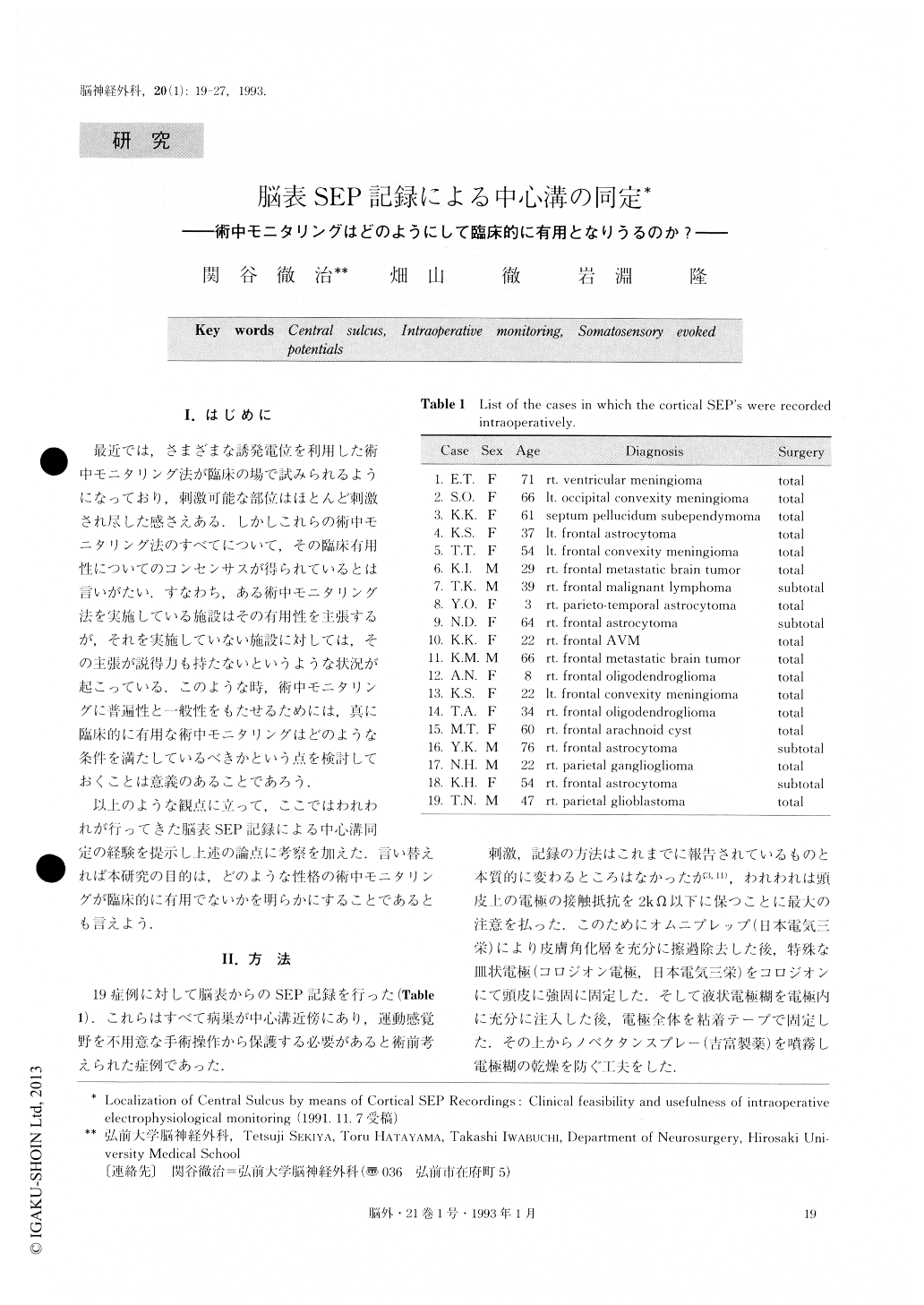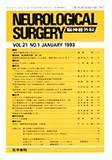Japanese
English
- 有料閲覧
- Abstract 文献概要
- 1ページ目 Look Inside
I.はじめに
最近では,さまざまな誘発電位を利用した術中モニタリング法が臨床の場で試みられるようになっており,刺激可能な部位はほとんど刺激され尽した感さえある.しかしこれらの術中モニタリング法のすべてについて,その臨床有用性についてのコンセンサスが得られているとは諄いがたい.すなわち,ある術中モニタリング法を実施している施設はその有用性を主張するが,それを実施していない施設に対しては,その主張が説得力も持たないというような状況が起こっている.このような時,術中モニタリングに普遍性と一般性をもたせるためには,真に臨床的に有用な術中モニタリングはどのような条件を満たしているべきかという点を検討しておくことは意義のあることであろう.
以上のような観点に立って,ここではわれわれが行ってきた脳表SEP記録による中心溝同定の経験を提示し上述の論点に考察を加えた.言い替えれば本研究の目的は,どのような牲格の術中モニタリングが臨床的に有用でないかを明らかにすることであるとも言えよう.
Clinical feasibility and usefulness of various intraop-erative electrophysiological monitoring methods that are widely utilized during neurosurgical operations were critically evaluated.
We divided these intraoperative monitoring methods (IOM) into two types; the monitoring methods that en-able the surgeons to obtain topographical orientation during operative procedures ('topographical IOM') and those that give them knowledge of the functional state of the nervous system that is involved in the operative procedures ('functional IOM').
It was shown why 'topographical TOM' is reliable and useful, based on our experiences of cortical SEP re-cordings to localize the central sulcus, and why the pre-sent 'functional IOM' is less reliable to guide the surgeons precisely during the operations. We presented some technical methods to cope with these problems in 'functional IOM'.
It is necessary to establish a good correlation between the intraoperative changes of the evoked potentials and the pathological changes responsible for these electrical changes as established in clinical electrocardiography.

Copyright © 1993, Igaku-Shoin Ltd. All rights reserved.


